All Ad Hoc Chart widgets have the same set of widget parameters; they only differ by the source of the information displayed in the widget, e.g.
Ad Hoc Deliverables Chart- displays information about deliverables.
Ad Hoc Issues Chart- displays information about issues.
Ad Hoc Portfolio Chart- displays information about projects.
Ad Hoc Risks Chart- displays information about risks.
Ad Hoc Tasks Chart- displays information about tasks.
Ad Hoc Team Chart displays information about.
Set up widget parameters for Ad Hoc Chart Widget
1. Click on the widget to activate the widget menu and click the  button to open widget parameters.
button to open widget parameters.
Please note: Ad hoc chart widget parameters are presented on 6 or 7 tabs, such as Fields, Sorting, Grouping, Aggregation, Risk/Resource/Tasks/Deliverable/Issue/ Filter, Project Filter and Misc (most widgets have two types of Filter, Deliverables Filter and Project Filter for example). Fields tab parameters are responsible for what information will be displayed in the widget, and the rest of the tabs are responsible for how it will be presented.
2. On the Fields tab define what fields will be displayed as columns in the widget, their format:
a) First select the fields, to do this click the Fields section, and it will show a dropdown listing all fields available for this widget, click on the field to add it to the table Fields. Columns in the widget will be displayed in the same order as the fields added to the Fields section.
Please note: To speed up the process of searching the fields that you need, just start typing the field’s name in the Fields section, dropdown will display all the fields that contain the typed phrase.
Click on the field’s "X" button to remove the corresponding column from the widget.
b) Then set a specific Field Format for each of the columns in the widget.
The following formats are available: None (can be used for strings, such as Project Name), Integer, Decimal, Cost, Percent, Work, Duration and Date, Week, Month, Quarter, Year, Flag, Html, Link. Select a format for each of the fields in the same order as the fields are presented in the Fields section.
Please note: “Select All” and “Clear All” options can be used to add and remove all the values at one go.
Please note: EPM Pulse automatically sets Field Format for Cost, Duration, and Date fields type. To change pre-defined by EPM Pulse format for a specific field, define a format for this field, setting the rest fields format to Auto.
To change pre-defined by EPM Pulse format for a specific field, define a format for this field, setting the rest fields format to Auto.
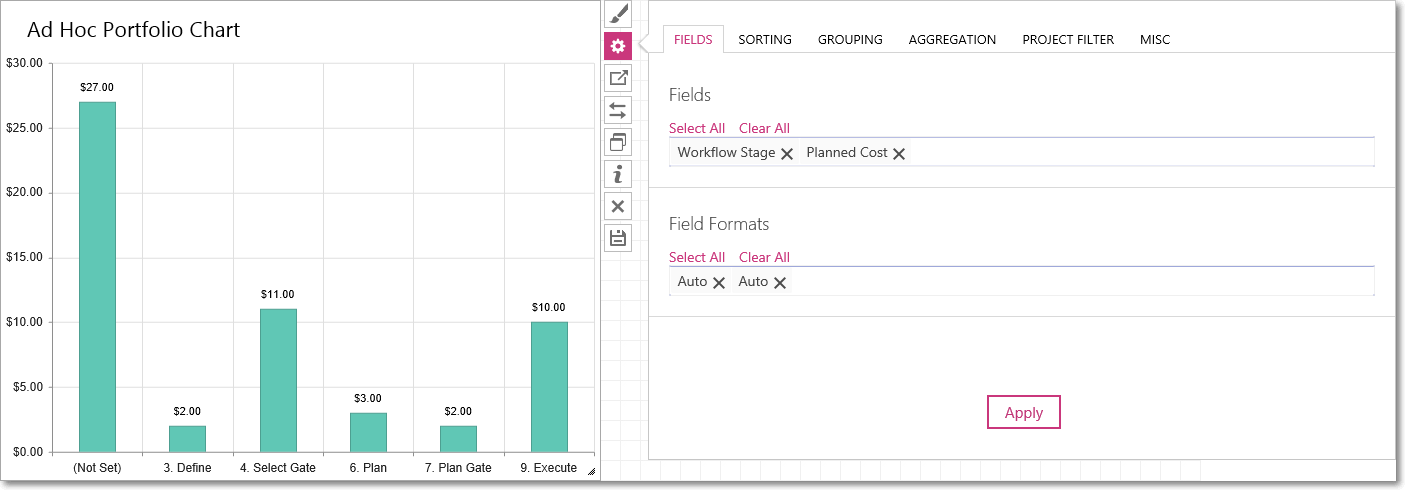
3. On the Sorting tab you can define by what field the records in the widget will be ordered and in what direction – ascending or descending.
a) Click on the Order By section, and select one/multiple fields by which the records will be ordered.
b) Click on the Direction section, select either Ascending or Descending direction.
Please note: it is not necessary for the field selected in the Order By to be added to the widget via the Fields tab. Widget records will be ordered by the selected field even if the field itself is not displayed in the widget.
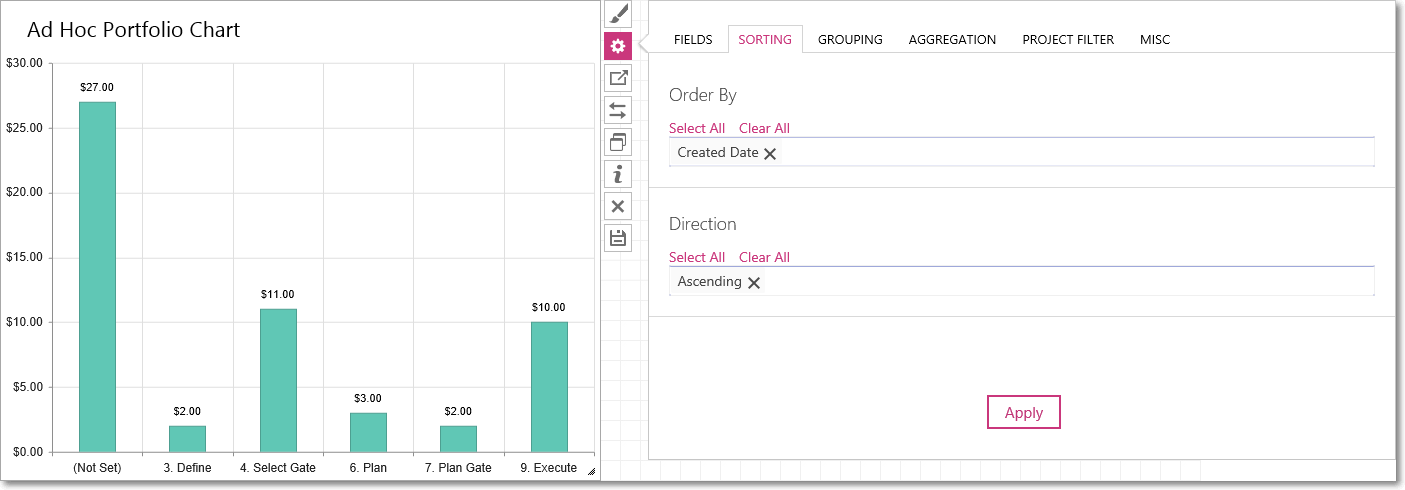
4. On the Grouping tab you can define by what field(s) the records in the widget will be grouped if grouping is needed.
a) Click on the Group By section, and select one/multiple fields by which the records will be grouped.
b) Group Keys section allows to group fields additionally. Fields will be grouped by Group Keys and will be displayed by Group by settings in the widget.
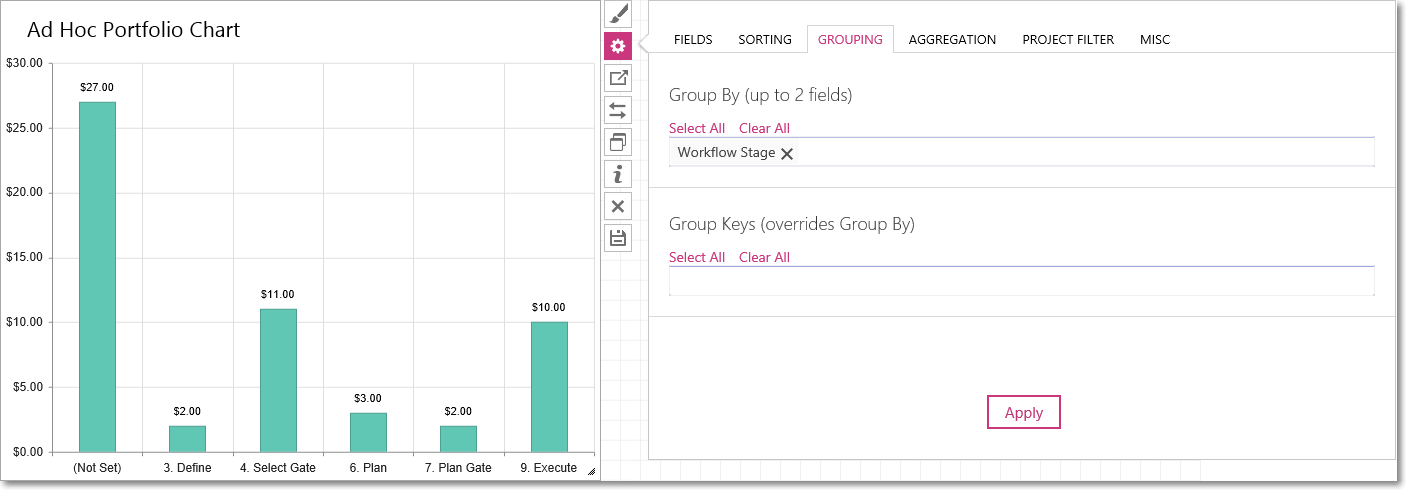
5. On the Aggregation tab you can select an aggregate function in the corresponding Aggregation Methods section: for grouping by 1 field and for grouping by 2 fields.
Select a function for each of the columns in the same order as the columns are presented in the widget.
Please note: “Select All” and “Clear All” options can be used to add and remove all the values at one go.
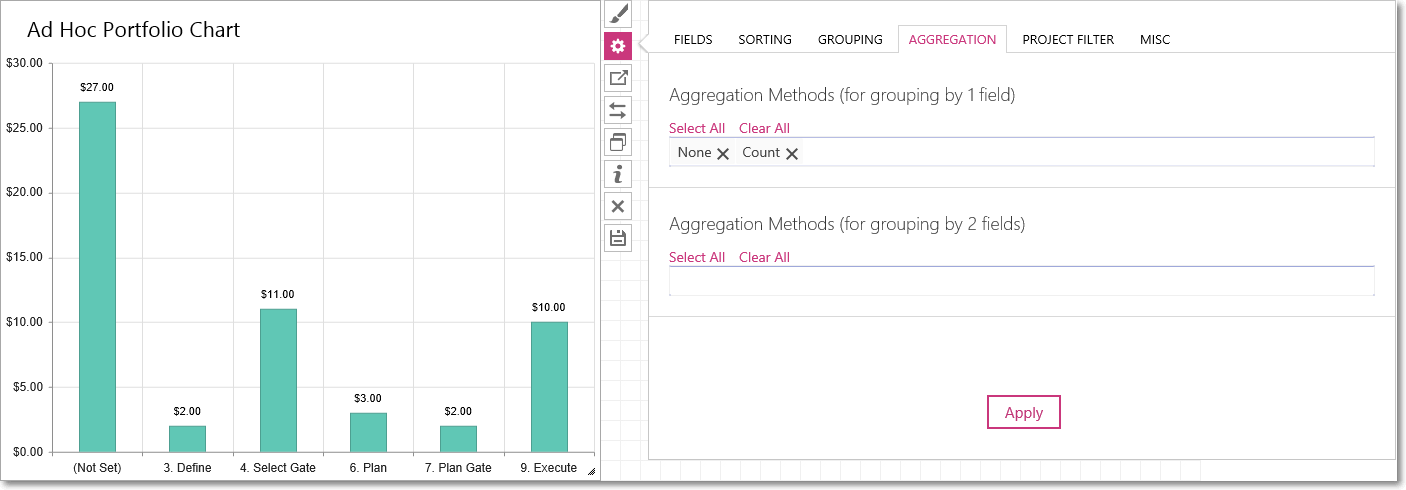
6. On the Filter tabs, if needed, you can apply a filter in addition to the dashboard-wide Project Filter to filter out the data displayed in the widget.
To filter the data out, select a field name and conditions.
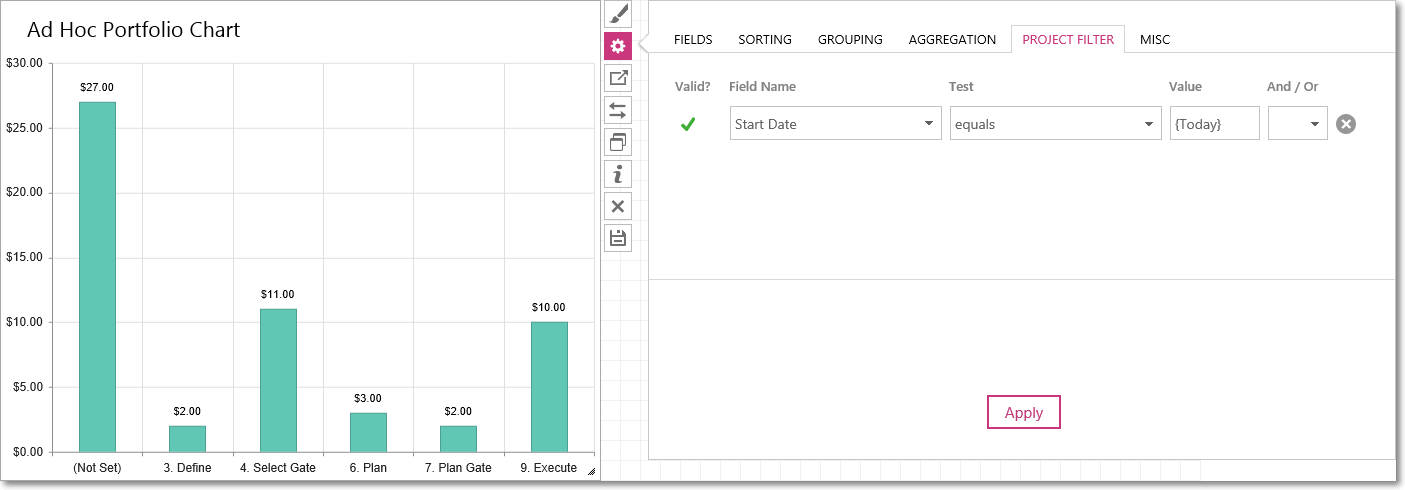
Please note: If a date field is selected in the Field Name, then it is possible to filter the records by the following values:
- {Today}
- {StartDate}
- {EndDate}
Where the {StartDate} and {EndDate} are the start and end dates of the dashboard timeline:

Please note: Most widgets have two types of Filter, Project Filter and one more, depending on the type of the widget. Ad Hoc Issues Table widget will contain Issues Filter tab, where additional filtering by issues can be set. Ad Hoc Deliverables Table widget will contain Deliverables Filter tab, etc.
7. On the Misc tab you can define the following parameters: a) In the Top Records section, you can limit the number of records displayed in the widget, e.g. if “50” is set for this field, then the widget will show only 50 top records. Leave this field blank if you want the widget to return all the records. b) In the Subprojects section select one of three options:
- No Subprojects: only parent (or master) projects will be displayed in the widget, subprojects will be hidden.
- Parent Project and Subprojects: both parent and subprojects will be displayed in the widget.
- Subprojects Only: parent (or master) projects will be hidden, and only subprojects will be displayed.
Please note: projects will not be duplicated in the widget, if a project is already displayed due to the Project Filter settings, then it won’t be added one more time due to the Subprojects parameter.
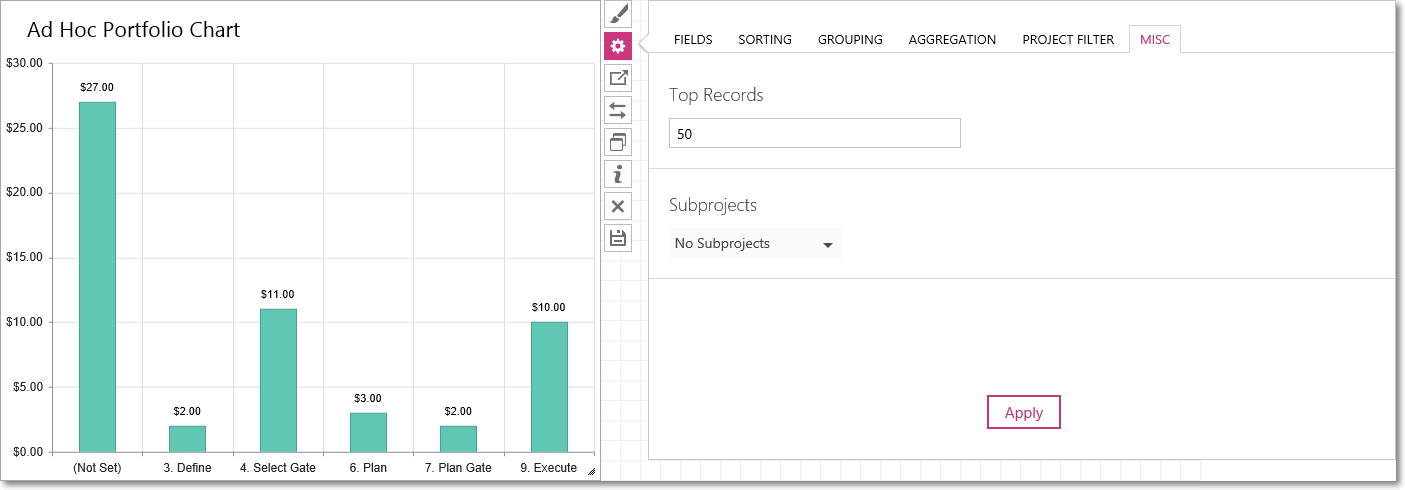
8. Click the Apply button to apply the parameters to the widget.
